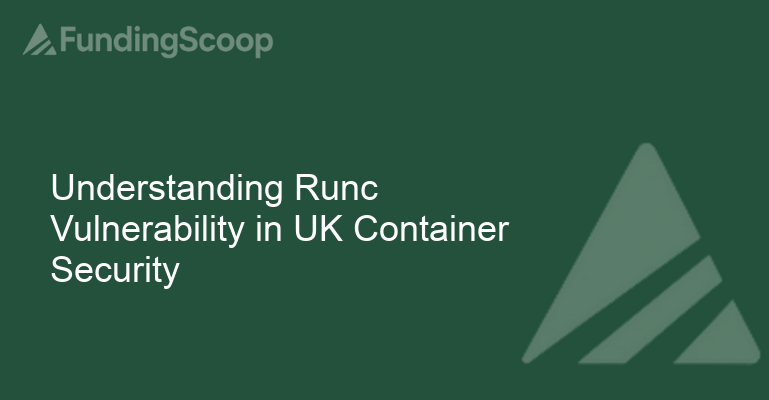
Understanding Runc Vulnerability in UK Container Security
Marcus Ashford
The CVE-2025-31133 runc vulnerability poses a serious threat to container environments like Docker and Kubernetes, emphasizing the need for enhanced cybersecurity measures. The UK's cybersecurity approach includes collaboration between private sectors and regulators to maintain robust defenses. Organizations must instill a culture of security awareness, as cyber risk management should be integral to business strategy to mitigate financial and reputational damages.
In the fast-paced field of cybersecurity, safeguarding container environments like Docker and Kubernetes is crucial. The runc vulnerability, identified as CVE-2025-31133, represents a significant threat to container isolation, with potential repercussions for businesses relying on these technologies. This flaw exploits the maskedPaths feature, undermining the security framework that many organisations trust for their operations.
Previously, the BBC has discussed how vulnerabilities such as these can disrupt operations across sectors, stressing the need for continuous vigilance. In a space where digital transformation is rapidly progressing, understanding these threats is crucial for operational integrity.
UK's Current Approach to Cybersecurity
The UK's attempt to bolster cybersecurity frameworks within enterprises involves collaborative efforts to maintain robust defences. Recent initiatives stress the importance of regular updates and comprehensive security patches. Collaborations between private sectors and regulators aim to create a resilient ecosystem, reducing the risks associated with vulnerabilities like runc.
According to government reports, a proactive stance against cybersecurity threats is mandated, urging enterprises to adopt stringent monitoring and immediate response tactics.
My Take
In my experience, the reality of these vulnerabilities is that they act as wake-up calls for organisations. The financial implications of breaches can be as catastrophic as the reputational damage they cause. While the fixes might seem straightforward — applying patches and updates — the broader challenge lies in instilling a culture of security awareness within every level of an organisation.
The uncomfortable truth is that many SMEs, particularly those new to container technologies, might not yet grasp the full scope of the threat landscape. It is essential to treat cyber risk management as an integral part of business strategy. Ensuring that staff are trained, systems are updated, and threat landscapes are regularly assessed will be the cornerstones of future-proof businesses.
As organisations navigate the complexities of modern digital environments, they must also adapt to evolving threats. The runc vulnerability exemplifies the kind of risks inherent in relying on containerisation technologies without adequate security measures. The UK must continue its dedication to high cybersecurity standards, ensuring businesses not only survive but thrive in this challenging digital era.


